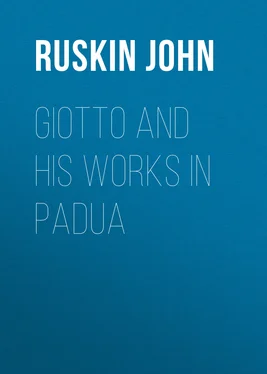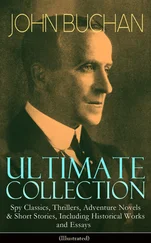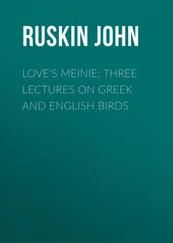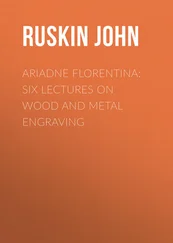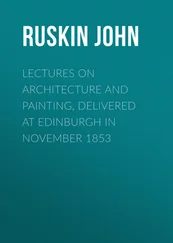John Ruskin - Giotto and his works in Padua
Здесь есть возможность читать онлайн «John Ruskin - Giotto and his works in Padua» — ознакомительный отрывок электронной книги совершенно бесплатно, а после прочтения отрывка купить полную версию. В некоторых случаях можно слушать аудио, скачать через торрент в формате fb2 и присутствует краткое содержание. Жанр: foreign_antique, foreign_home, literature_19, visual_arts, на английском языке. Описание произведения, (предисловие) а так же отзывы посетителей доступны на портале библиотеки ЛибКат.
- Название:Giotto and his works in Padua
- Автор:
- Жанр:
- Год:неизвестен
- ISBN:нет данных
- Рейтинг книги:3 / 5. Голосов: 1
-
Избранное:Добавить в избранное
- Отзывы:
-
Ваша оценка:
- 60
- 1
- 2
- 3
- 4
- 5
Giotto and his works in Padua: краткое содержание, описание и аннотация
Предлагаем к чтению аннотацию, описание, краткое содержание или предисловие (зависит от того, что написал сам автор книги «Giotto and his works in Padua»). Если вы не нашли необходимую информацию о книге — напишите в комментариях, мы постараемся отыскать её.
Giotto and his works in Padua — читать онлайн ознакомительный отрывок
Ниже представлен текст книги, разбитый по страницам. Система сохранения места последней прочитанной страницы, позволяет с удобством читать онлайн бесплатно книгу «Giotto and his works in Padua», без необходимости каждый раз заново искать на чём Вы остановились. Поставьте закладку, и сможете в любой момент перейти на страницу, на которой закончили чтение.
Интервал:
Закладка:
We may fancy the glance of the boy, when he and Cimabue stood side by side on the ridge of Fiesole, and for the first time he saw the flowering thickets of the Val d'Arno; and deep beneath, the innumerable towers of the City of the Lily, the depths of his own heart yet hiding the fairest of them all. Another ten years passed over him, and he was chosen from among the painters of Italy to decorate the Vatican.
The account given us by Vasari of the mode of his competition on this occasion, is one of the few anecdotes of him which seem to be authentic (especially as having given rise to an Italian proverb), and it has also great point and value. I translate Vasari's words literally.
"This work (his paintings in the Campo Santo of Pisa) acquired for him, both in the city and externally, so much fame, that the Pope, Benedict IX., sent a certain one of his courtiers into Tuscany, to see what sort of a man Giotto was, and what was the quality of his works, he (the pope) intending to have some paintings executed in St. Peter's; which courtier, coming to see Giotto, and hearing that there were other masters in Florence who excelled in painting and in mosaic, spoke, in Siena, to many masters; then, having received drawings from them, he came to Florence; and having gone one morning into Giotto's shop as he was at work, explained the pope's mind to him, and in what way he wished to avail himself of his powers, and finally requested from him a little piece of drawing to send to his Holiness. Giotto, who was most courteous, took a leaf (of vellum?), and upon this, with a brush dipped in red, fixing his arm to his side, to make it as the limb of a pair of compasses, and turning his hand, made a circle so perfect in measure and outline, that it was a wonder to see: which having done, he said to the courtier, with a smile, 'There is the drawing.' He, thinking himself mocked, said, 'Shall I have no other drawing than this?' 'This is enough, and too much,' answered Giotto; 'send it with the others: you will see if it will be understood.' The ambassador, seeing that he could not get any thing else, took his leave with small satisfaction, doubting whether he had not been made a jest of. However, when he sent to the pope the other drawings, and the names of those who had made them, he sent also that of Giotto, relating the way in which he had held himself in drawing his circle, without moving his arm, and without compasses. Whence the pope, and many intelligent courtiers, knew how much Giotto overpassed in excellence all the other painters of his time. Afterwards, the thing becoming known, the proverb arose from it: 'Thou art rounder than the O of Giotto;' which it is still in custom to say to men of the grosser clay; for the proverb is pretty, not only on account of the accident of its origin, but because it has a double meaning, 'round' being taken in Tuscany to express not only circular form, but slowness and grossness of wit."
Such is the account of Vasari, which, at the first reading, might be gravely called into question, seeing that the paintings at Pisa, to which he ascribes the sudden extent of Giotto's reputation, have been proved to be the work of Francesco da Volterra; 5and since, moreover, Vasari has even mistaken the name of the pope, and written Boniface IX. for Boniface VIII. But the story itself must, I think, be true; and, rightly understood, it is singularly interesting. I say, rightly understood; for Lord Lindsay supposes the circle to have been mechanically drawn by turning the sheet of vellum under the hand, as now constantly done for the sake of speed at schools. But neither do Vasari's words bear this construction, nor would the drawing so made have borne the slightest testimony to Giotto's power. Vasari says distinctly, "and turning his hand" (or, as I should rather read it, "with a sweep of his hand") not "turning the vellum;" neither would a circle produced in so mechanical a manner have borne distinct witness to any thing except the draughtsman's mechanical ingenuity; and Giotto had too much common sense, and too much courtesy, to send the pope a drawing which did not really contain the evidence he required. Lord Lindsay has been misled also by his own careless translation of "pennello tinto di rosso" ("a brush dipped in red,") by the word "crayon." It is easy to draw the mechanical circle with a crayon, but by no means easy with a brush. I have not the slightest doubt that Giotto drew the circle as a painter naturally would draw it; that is to say, that he set the vellum upright on the wall or panel before him, and then steadying his arm firmly against his side, drew the circular line with one sweeping but firm revolution of his hand, holding the brush long. Such a feat as this is completely possible to a well-disciplined painter's hand, but utterly impossible to any other; and the circle so drawn, was the most convincing proof Giotto could give of his decision of eye and perfectness of practice.
Still, even when thus understood, there is much in the anecdote very curious. Here is a painter requested by the head of the Church to execute certain religious paintings, and the only qualification for the task of which he deigns to demonstrate his possession is executive skill. Nothing is said, and nothing appears to be thought, of expression, or invention, or devotional sentiment. Nothing is required but firmness of hand. And here arises the important question: Did Giotto know that this was all that was looked for by his religious patrons? and is there occult satire in the example of his art which he sends them?—or does the founder of sacred painting mean to tell us that he holds his own power to consist merely in firmness of hand, secured by long practice? I cannot satisfy myself on this point: but yet it seems to me that we may safely gather two conclusions from the words of the master, "It is enough, and more than enough." The first, that Giotto had indeed a profound feeling of the value of precision in all art; and that we may use the full force of his authority to press the truth, of which it is so difficult to persuade the hasty workmen of modern times, that the difference between right and wrong lies within the breadth of a line; and that the most perfect power and genius are shown by the accuracy which disdains error, and the faithfulness which fears it.
And the second conclusion is, that whatever Giotto's imaginative powers might be, he was proud to be a good workman , and willing to be considered by others only as such. There might lurk, as has been suggested, some satire in the message to the pope, and some consciousness in his own mind of faculties higher than those of draughtsmanship. I cannot tell how far these hidden feelings existed; but the more I see of living artists, and learn of departed ones, the more I am convinced that the highest strength of genius is generally marked by strange unconsciousness of its own modes of operation, and often by no small scorn of the best results of its exertion. The inferior mind intently watches its own processes, and dearly values its own produce; the master-mind is intent on other things than itself, and cares little for the fruits of a toil which it is apt to undertake rather as a law of life than a means of immortality. It will sing at a feast, or retouch an old play, or paint a dark wall, for its daily bread, anxious only to be honest in its fulfilment of its pledges or its duty, and careless that future ages will rank it among the gods.
I think it unnecessary to repeat here any other of the anecdotes commonly related of Giotto, as, separately taken, they are quite valueless. Yet much may be gathered from their general tone . It is remarkable that they are, almost without exception, records of good-humoured jests, involving or illustrating some point of practical good sense; and by comparing this general colour of the reputation of Giotto with the actual character of his designs, there cannot remain the smallest doubt that his mind was one of the most healthy, kind, and active, that ever informed a human frame. His love of beauty was entirely free from weakness; his love of truth untinged by severity; his industry constant, without impatience; his workmanship accurate, without formalism; his temper serene, and yet playful; his imagination exhaustless, without extravagance; and his faith firm, without superstition. I do not know, in the annals of art, such another example of happy, practical, unerring, and benevolent power.
Читать дальшеИнтервал:
Закладка:
Похожие книги на «Giotto and his works in Padua»
Представляем Вашему вниманию похожие книги на «Giotto and his works in Padua» списком для выбора. Мы отобрали схожую по названию и смыслу литературу в надежде предоставить читателям больше вариантов отыскать новые, интересные, ещё непрочитанные произведения.
Обсуждение, отзывы о книге «Giotto and his works in Padua» и просто собственные мнения читателей. Оставьте ваши комментарии, напишите, что Вы думаете о произведении, его смысле или главных героях. Укажите что конкретно понравилось, а что нет, и почему Вы так считаете.
